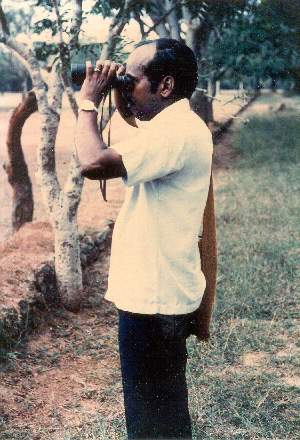
Home | Biodata | Biography | Photo Gallery | Publications | Tributes
Nature Study

 |
Home | Biodata | Biography | Photo Gallery | Publications | Tributes Nature Study |
 |
These winged termites are called eeyal or eesal in Tamil and are reported in the early Tamil literature as coming out in large numbers at the beginning of the kaar season which corresponds to the end of August. These winged termites were caught in large quantities by smoking them out of the white ant mounds and then cooked with rice and butter, and consumed with great relish. These have a high fat content and are sold in Tambaram Market, when available, at the rate of about 10 to 15 paise per litre. These are also recommended to the cosmonauts who may have to live on survival diet in the jungle.
The white-ants have in each colony, king and queen, workers and soldiers, and young ones in different stages of development. The workers and soldiers are in fact sterile males and females. The virile males and females grow larger in size and they develop wings and wait for several weeks inside the hill for the great "Swarming" day. When the weather conditions are suitable, a small hole is made in the mound and swarms of these alates or winged insects emerge out for the nuptial flight. These are attracted by the light and the alates from the nearby mounds often join in the flight. Birds, bats, frogs, lizards, scorpions and centipedes take a heavy toll of these alates. At the end of the flight the female alights first and after a short run deliberately casts off its wings by breaking them off with a quick imperceptible jerk. In some forms the female gives off a scent by raising the tip of its abdomen to attract the male. The attracted male alights behind the female and casts off its wings and follows the female. Some times, more than one male may follow a single female but this unnatural procession breaks off soon. When a female is being followed by a male, if the male is stopped for a while the female stops and waits for the male to catch up with her again. The female leads the male to a dark crevice, or burrows a hole for both of them. The egg-laying starts after mating and a new termite colony is slowly formed. There are also certain types of females that lay eggs without mating.
At Tambaram we some times find more than one egg-laying female or queen in a single nest. The large black scorpions are found to breed inside the termite nests and if you come across too many black scorpions in one area, it is quite likely that these are from the white-ant hills nearby.